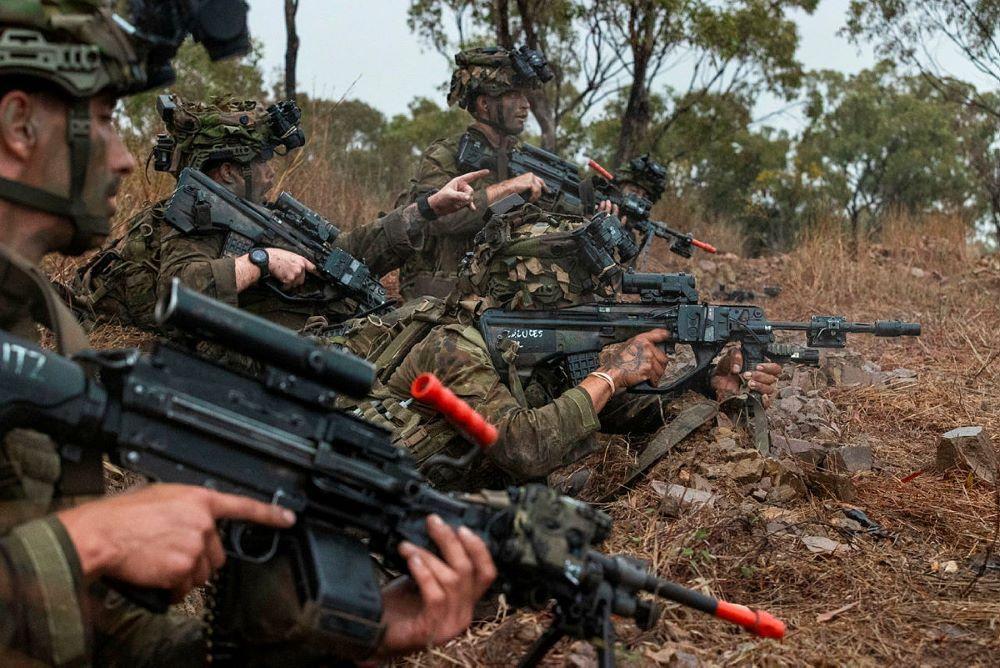Australian tripwire forces: an idea whose time has come?
Posted By Andrew Carr and Stephan Fruehling on August 18, 2023 @ 06:00

In the public mind, long-range strike options, such as land-based missiles and the AUKUS submarines, are ‘the deterrent’. If so, the Australian Defence Force is stuck in a holding pattern for many years to come. But the Cold War demonstrates there are many ways to signal deterrence, including through the use of the humble soldier, deployed far forward of the country, and honour-binding a response, should they come to harm.
In our new report, Forward presence for deterrence: implications for the Australian Army [1], published by the Australian Army Research Centre, we explore the use of forward-presence land forces to support deterrence. By placing Australian troops in key locations—such as on as the Cocos (Keeling) and Christmas Islands, or in foreign countries at the invitation of regional partners—Canberra can begin signalling to adversaries its specific deterrence commitments and laying the operational foundations for a denial strategy. To clarify the different political and operational purposes of forward-presence, or tripwire [2], forces, we identified three different models.
First, there are ‘thin tripwires’, which are intended, primarily through their sacrifice, to trigger an honour-bound political and military response. This would require the smallest day-to-day force-sustainment costs but, given the need to demonstrate a substantial and credible threat of retaliation, does not carry little cost.
Second, Australia could adopt a ‘thick tripwire’ model, which, while still sacrificial, would be sufficiently armed to force an adversary out of the grey zone, requiring much larger forces, open conflict, and thus strong indicators of warning. This force might also contribute significant intelligence, surveillance and reconnaissance capabilities.
Finally, there is the ‘forward defence’ model. Under this approach, Australia would not only signal a commitment and intention to respond, but seek to have capabilities that could meaningfully deny an adversary the objective they seek. Such a model would depend on preparations for reinforcement that bring their own resource burden.
What would that look like? In our studies of forward-presence forces, such as Wake Island, the Berlin Garrison, the Falkland Islands and NATO’s eFP forces [3], we found that political considerations and practical challenges—not least of force generation—are at least as important as operational concepts of warfighting should deterrence fail. Deterrence is about signalling, so a forward presence needs to be imbued with political significance that—to choose a catastrophic failure—Britain’s meagre land forces on the Falklands lacked in 1982. Forces deployed to send signals in crises are not necessarily suited to support coherent operational postures—and the limitations of such forces can be a feature, not a bug, if expectations of allied support need to be tempered as much as they need to be substantiated.
As a purely hypothetical example, we imagine a case where Australia wants to support the Philippines. Canberra and Manila have signed a ‘strategic partnership [4]’, Manila is a US ally, and the Philippines is an important site for resisting China’s growing interference with the sovereignty of regional states. If requested by the Philippine government, Australia might consider stationing forces in the Philippines, such as on Palawan Island, as a demonstration of political solidarity. Would we want to send newly acquired long-range strike capabilities that would raise the question of their use, even if the Philippines’ main islands were not yet under attack?
In time, Australia’s increasing options for long-range strike will certainly strengthen its capacity to deter. Yet across our historical case studies and hypotheticals, we consistently found that many other factors shaped the ultimate success of a deterrence effort. Better appreciation of the complex relationship between deterrence, lethality, signalling and forward presence will be crucial if Australia is to implement the broad direction set by the 2023 defence strategic review.
If Canberra wants to actively contribute to regional and local deterrence in the short to medium term, and to build the skills needed for the next tense few decades of trying to deter conflict, sending parts of the ADF forward as a tripwire may be an idea whose time has come.
Article printed from The Strategist: https://aspistrategist.ru
URL to article: /australian-tripwire-forces-an-idea-whose-time-has-come/
URLs in this post:
[1] Forward presence for deterrence: implications for the Australian Army: https://researchcentre.army.gov.au/library/occasional-papers/forward-presence-deterrence
[2] tripwire: https://en.wikipedia.org/wiki/Tripwire_force
[3] eFP forces: https://www.nato.int/cps/en/natohq/topics_136388.htm
[4] strategic partnership: https://www.pm.gov.au/media/strengthening-australias-relationship-philippines
Click here to print.